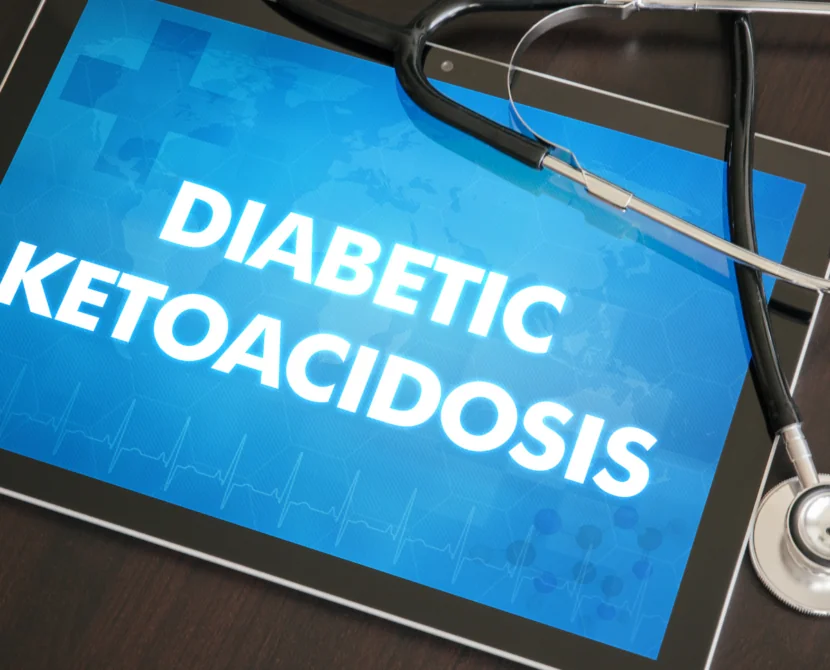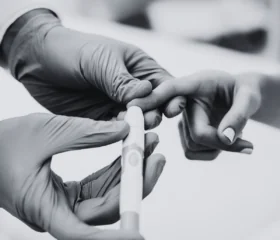Understanding Diabetic Ketoacidosis (DKA): What Every Woman with Diabetes Should Know

Diabetic Ketoacidosis (DKA) is a life-threatening complication of diabetes that demands immediate medical care. DKA arises when the body cannot use glucose effectively due to low insulin levels, causing it to burn fat for energy. This process releases ketones, which accumulate in the blood, creating a dangerous acidic environment.
While anyone with diabetes can develop DKA, certain groups face higher risks due to limited healthcare access and socioeconomic factors. Women, in particular, may experience hormonal fluctuations and unique social stressors that heighten their DKA risk. Recognizing DKA signs and understanding how to prevent it is vital for protecting your health, especially as DKA can affect people with type 2 diabetes under conditions like severe illness or stress.
Causes and Risk Factors for Women
DKA results from severe insulin deficiency, which forces the body to rely on fat for energy, releasing ketones into the bloodstream. In people with type 1 diabetes, the pancreas produces little or no insulin, making them particularly vulnerable if insulin is not promptly administered.
Women with diabetes face specific DKA risk factors:
- Hormonal Changes: Fluctuations in estrogen and progesterone during menstruation, pregnancy, and menopause can affect insulin sensitivity and blood glucose. These shifts require careful monitoring to manage glucose levels effectively.
- Pregnancy: Preexisting or gestational diabetes raises DKA risk during pregnancy, especially in later trimesters, due to changes in metabolism and insulin needs.
- Menopause: Hormonal changes post-menopause can challenge blood glucose management, increasing DKA risk and necessitating adjustments in diabetes management.
- Stress, Illness, and Infection: Physical or mental stress and infections, like UTIs, can cause insulin resistance and increased ketone production, often leading to DKA if left untreated.
- Dehydration: Early signs of dehydration, such as fatigue or headaches, can go unnoticed, allowing ketones to build up quickly.
- Medication Disruptions: Missing insulin doses due to busy schedules or medication access challenges is a significant DKA trigger.
- New Onset Diabetes: In younger women or adolescents, DKA may signal undiagnosed type 1 diabetes.
Signs and Symptoms
Detecting DKA early is crucial to prevent severe complications. Initial signs include:
- Frequent urination
- Excessive thirst
- Dry mouth
- Above-target blood glucose
- Fatigue
If untreated, DKA symptoms can escalate to:
- Nausea and vomiting
- Abdominal pain
- Rapid breathing or shortness of breath
- Fruity breath odor
- Confusion or disorientation
Certain symptoms, such as increased fatigue, mood swings, or yeast infections, may be mistaken for hormonal changes or stress-related issues. Staying vigilant about these signs is essential for timely intervention. Frequent blood glucose and ketone monitoring helps detect DKA early. Women should be mindful of how their bodies react to hormonal changes, infections, and stress so they can act swiftly if warning signs appear. It is also crucial to recognize that these symptoms may not be isolated; they can cluster and escalate rapidly. Establishing a routine for regular self-assessment, including tracking emotional well-being and physical symptoms, can provide valuable insights into one’s overall health. Furthermore, maintaining a detailed log of glucose readings and associated symptoms can help healthcare providers make informed decisions about management strategies, enhancing the effectiveness of treatment plans and ultimately improving long-term health outcomes. This proactive approach fosters a deeper understanding of individual health patterns and reinforces the importance of personal agency in diabetes management.
Preventing DKA
Sick Day Guidelines
Following specific guidelines for sick days can help women manage diabetes during illness or stress:
- Regularly check blood glucose and ketone levels.
- Adjust insulin as needed.
- Stay hydrated to prevent ketone buildup.
Ketone Monitoring
Ketone strips or monitors are essential for checking ketone levels in blood or urine. Early detection of ketones should prompt corrective actions, such as adjusting insulin or seeking medical help.
Daily Diabetes Management Tips
To lower the risk of DKA, women should:
- Follow a structured meal plan for stable blood glucose.
- Maintain hydration, particularly during physical activity or hot weather.
- Regularly track blood glucose, especially during menstrual cycles, pregnancy, or menopause.
- Exercise to improve insulin sensitivity, avoiding intense workouts if ketones are present.
Consistent Insulin Use
Proper insulin adherence is key to DKA prevention. Women should always have access to their medications and consult healthcare providers for dose adjustments during hormonal changes or illness.
Regular Check-ups and Communication
Routine appointments with healthcare providers ensure women’s diabetes management plans are up to date, enabling early interventions to prevent DKA.
What to Do If You Suspect DKA
Immediate Actions
If DKA is suspected, take these steps immediately:
- Check blood glucose and ketone levels.
- Hydrate with water or electrolyte drinks.
- Follow insulin guidelines if blood glucose is above range and ketones are detected.
Monitoring and When to Call a Doctor
- Contact a healthcare provider if blood glucose remains above 250 mg/dL despite insulin, or if ketones are consistently detected.
- Be alert to severe symptoms like nausea, vomiting, or shortness of breath, as these indicate the need for immediate medical help.
When to Seek Emergency Help
Seek emergency assistance if:
- Blood glucose exceeds 300 mg/dL with ketones present.
- Severe symptoms, such as confusion or rapid breathing, arise.
- Blood glucose or ketones cannot be stabilized through home care.
Managing DKA at Home While Awaiting Emergency Help
While waiting for emergency support, continue hydrating, take small insulin doses as directed, and closely monitor symptoms to provide healthcare providers with detailed information upon arrival.
Diabetic Ketoacidosis is a severe but preventable condition. Women with diabetes can minimize their DKA risk through awareness and proactive management tailored to their unique health needs and risk factors. Following sick day protocols, tracking blood glucose and ketones, and maintaining an open dialogue with healthcare teams are essential strategies for reducing DKA risks. Additionally, women should prioritize education about the interplay between hormonal changes and diabetes management, enabling them to adapt their care plans accordingly. Prompt action at the first sign of symptoms can prevent complications, empowering women to take command of their health and maintain well-being despite diabetes challenges. Ultimately, fostering a strong support network – including family, friends, and healthcare providers – can further enhance a woman’s ability to navigate her diabetes journey effectively, ensuring she remains informed, engaged, and resilient in managing her condition.





